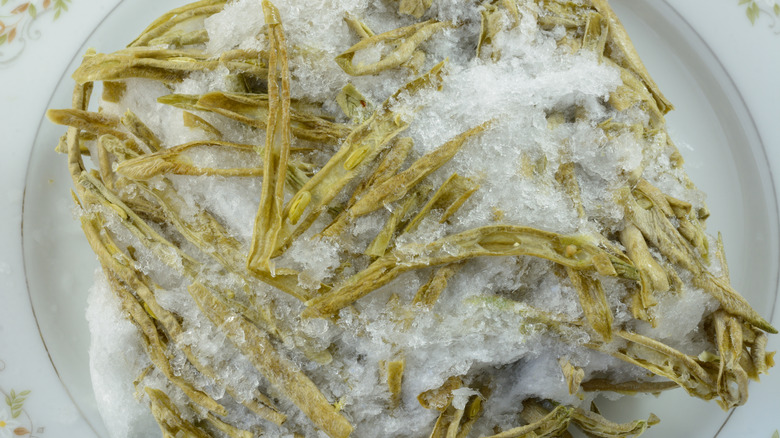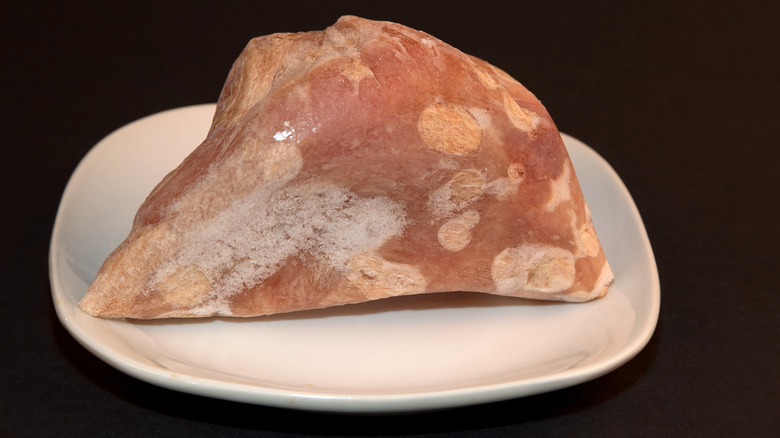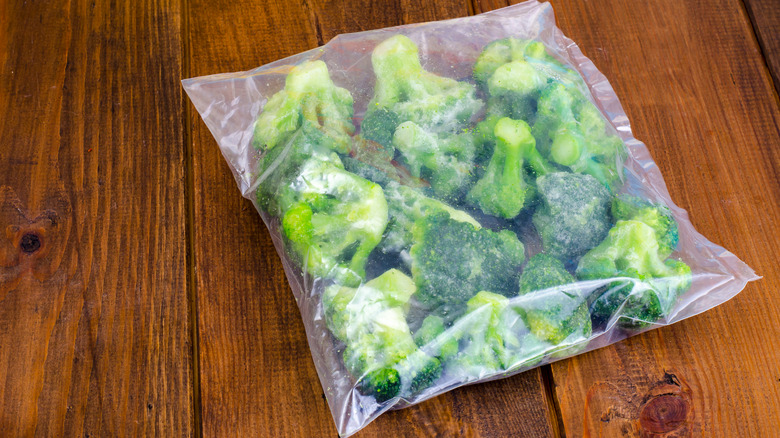The Scientific Reason Freezer Burn Happens
There is no denying freezers are an incredibly useful invention. These handy food preservation tools didn't arrive in our homes until the 1940s, according to History of Refrigeration. Prior to that, people used ice boxes in their homes to keep food frozen. History of Refrigeration adds that the discovery of a low-toxicity refrigerant known as Freon enabled companies to mass-produce deep freezers for domestic use. Following World War II, production of these useful new freezer boxes skyrocketed, and soon there was one in just about every home.
However, as handy as the freezer might be, it does have some downsides. While from a historical perspective, freezers might be considered something of a modern miracle, these days it is easy to take this invention for granted. So most of us probably feel some amount of annoyance when we pull out a carton of ice cream or frozen leftovers and find a layer of freezer burn over the top. But what exactly causes this unsightly frost?
Freezer burn is caused by moisture loss
Freezer burn is caused when the outer layer of the food loses its moisture, due to its exposure to the cold air inside the freezer, says Whirlpool. Over time, the frozen water molecules undergo a process called sublimation, which is when the solid ice changes directly into a gas, according to Healthline. This causes a layer of ice crystals that coats the outer surface of the food. As these water molecules are lost, the food becomes dehydrated, dry, and shriveled looking, giving it the appearance of what we commonly call freezer burn.
It is usually pretty easy to determine if your frozen meat or veggies have freezer burn, which can be identified by a telltale layer of ice crystals that form over the top of the food item. It can also give certain foods, like meat, a dull gray color, while foods like vegetables and fruits will look rough and shriveled. Freezer burn also impacts the taste and texture of the food, causing items to taste bland, dry, and tougher to chew, says Whirlpool.
Freezer burn can be prevented by reducing exposure to air
Luckily, this unsightly layer of freezer burn can be pretty easy to avoid if you store your foods correctly. One key way to avoid freezer burn is to make sure that the food has cooled down completely before putting it in the freezer, according to Whirlpool. This helps prevent excess steam from being trapped along with the food, which can cause more ice crystals to form.
It is also important to reduce the amount of air the food is exposed to, according to Healthline. This means wrapping the foods tightly and storing them in air-tight, freezer-safe containers, and ensuring no excess air is trapped inside the package before storing it. Lastly, the longer that food sits in the freezer, the more likely it is to develop freezer burn, so it is a good idea to take regular stock of your inventory and use or toss any items that may have been in there for too long.
While it might look slightly unappetizing, foods with freezer burn are still safe to eat, according to Food Network. In most cases, these foods can be defrosted and heated up like any other frozen meal. With more severe cases of freezer burn, the affected sections can be cut away before the meal is reheated. However, any items that have an odd smell or off-taste are warning signs you should throw food away.


